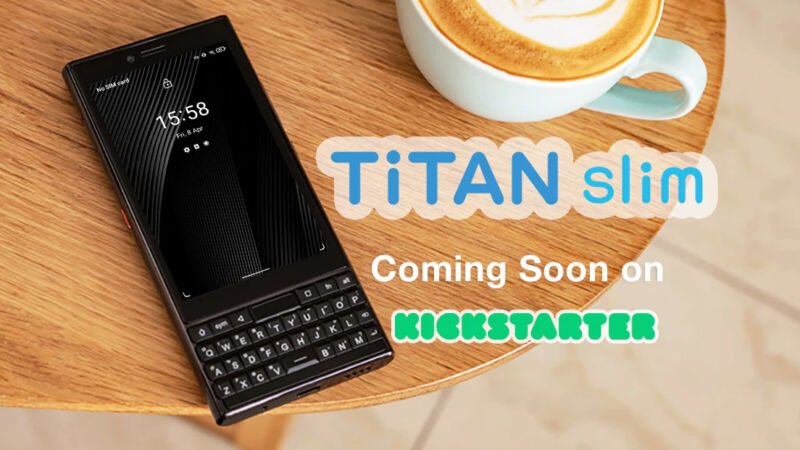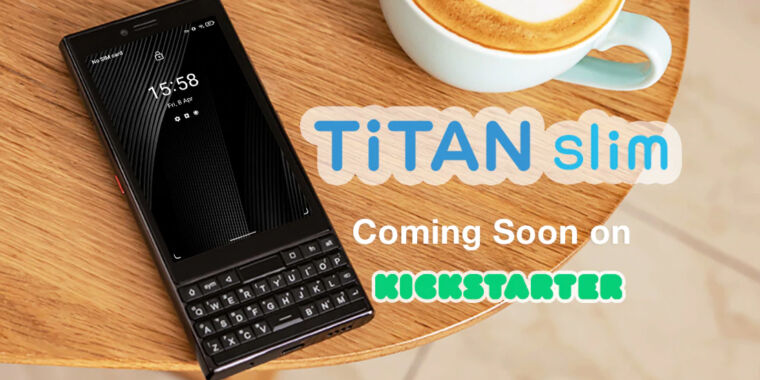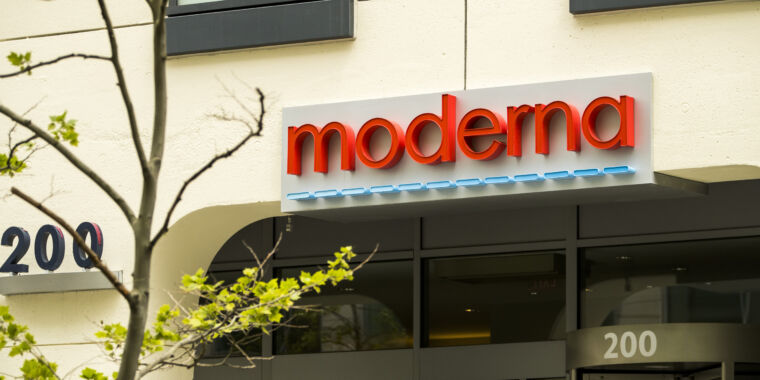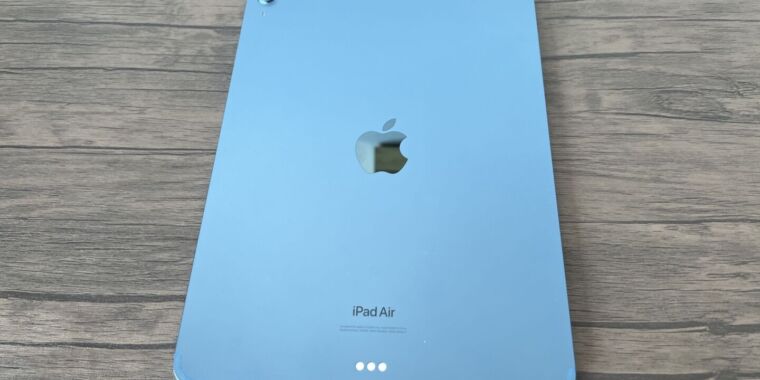
Unihertz’s latest boutique smartphone is the Unihertz Titan Slim. In contrast to the all-screen phones that dominate the market, this phone marks another attempt to bring Blackberry-style QWERTY bar phones into the smartphone era.
For whatever reason, Unihertz never officially unveiled the phone on its website (there is only this “coming soon” teaser image), but enough phone reviews have been published by now that the product is pretty much public. Be warned that almost every reviewer who tested the Titan Slim came away with negative impressions, but at least it’s a unique device.
This PCMag report details most of the specs. The front of the phone sports a 4.2-inch LCD that is “roughly” 1280×768—and then all those QWERTY buttons start. With so much space needed for the hardware keyboard, shrinking the bezels should be a priority. Even $150 smartphones have teardrop front cameras and minimal bezels these days. Wasting so much space means the display comes with a weird 5:3 aspect ratio, which several reports say causes problems with Android app layouts.
The SoC is a Mediatek Helio P70. This is a 3-year-old SoC with four Cortex-A73 cores, four Cortex-A53 cores, and an ARM Mali-G72 MP3 GPU all built on a 12 nm process. The software is old, too; the phone ships with the 20-month-old Android 11. The device has 6GB of RAM, 128GB of storage, and a 4100 mAh battery. The main upside here is the price, which is “under $300” (that usually means exactly $299.99).
PCMag gives dimensions of 5.79×2.67×0.51 inches (147×67.8×12.7 mm), putting it in the running for the thickest phone of 2022. That would be fine if the design took advantage of the extra bulk, but Unihertz still couldn’t find room for a headphone jack or a microSD card. These are strange omissions for a phone that seems dedicated to old-school usage. Unihertz did manage to cram in dual physical SIM slots and an IR blaster, though.
The Mr.Mobile review.
The four-row QWERTY keyboard has a pretty strange layout. The top row is just a bunch of function keys, like Shift, a fingerprint reader, and Android navigation buttons. The whole QWERTY section of the keyboard is condensed into three rows, with the space bar splitting the “V” and “B” keys. It seems like the first row of this keyboard should actually be the last row, with a space bar taking up the fingerprint reader spot. This would bring the layout in line with most Blackberries (and real keyboards), which tend to start the QWERTY row at the top and make the bottom row full of function keys and the space bar. The QWERTY keyboard is the singular selling point of this phone, and immediately compromising the layout like this is a bad idea.
MrMobile (aka Micheal Fisher) has published a great review that takes issue with most major components in the phone. Fisher says the phone’s glossy plastic finish “feels cheap” and that a “sense of cheap compromise pervades the Titan Slim.” The screen has “poor viewing angles,” and it’s not very bright. Fisher says the typing layout feels “cramped,” with a weight distribution that is “just as top-heavy as it looks.” The rarity of physical keyboards means Android doesn’t work very well with them, and, along with a bunch of other compromises, Fisher says the keyboard is “so fiddly and fussy that most of the time, I just wanted to give up and put it down.”
So it’s not great, but QWERTY enthusiasts don’t have a lot of options at this point. If you still don’t want to submit to the on-screen keyboard, the Titan Slim will be up on Unihertz’s Kickstarter store “soon.”








